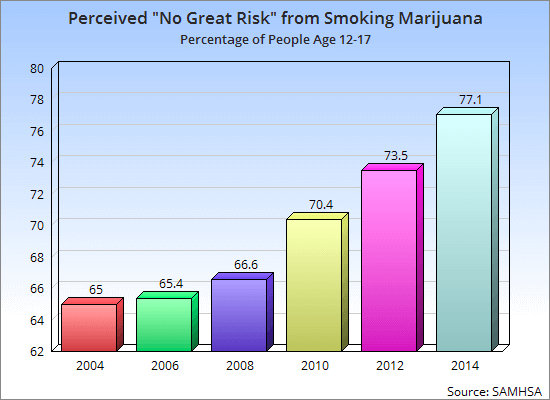

By: Lakeview Health
Many people understand that smoking is bad for your health, and that would certainly include smoking marijuana. This has prompted many cannabis users in recent years to start vaping cannabis as a supposedly healthier and less smelly alternative. E-cigarettes were introduced as a safer alternative to smoking tobacco. However, teenagers quickly discovered their potential for inconspicuous marijuana use. In 2015, Yale University researchers surveyed 3,847 Connecticut high school students and found a surprising number of the kids—close to 30 percent—admitted having tried marijuana or hashish. The study, published in the journal Pediatrics, also discovered that nearly one in five e-cigarette smokers have used the device to vaporize cannabis or byproducts like hash oil. Many physicians believe that marijuana use is especially problematic for teenagers and young adults. Krista Lisdahl is the director of the Brain Imaging and Neuropsychology Lab at the University of Wisconsin. She told NPR, “It’s a mistake for teenagers to use cannabis.” “It’s the absolute worst time because the mind-altering drug can disrupt development. Think of the teen years as the last golden opportunity to make the brain as healthy and smart as possible.” Studies show that regular marijuana use can change the structure of the teenage brain, specifically in areas dealing with memory and problem-solving. Unfortunately, the risk perception among children for marijuana use has decreased significantly in the last decade. The low-risk perception is even greater among 18–24-year-olds for 2014. In that cohort, 86.5 percent perceive no great risk from smoking marijuana once a month, the highest low-risk perception of all age groups. In view of these figures, it is hardly surprising to find that widespread marijuana use continues into adulthood. A recent Gallup poll found that 19 percent of 18–29-year-olds are current marijuana users. The same poll revealed that 13 percent of all adults are current cannabis users, up from 7 percent in 2013. Gallup concluded that “states’ willingness to legalize marijuana could be a reason for the uptick in the percentage of Americans who say they smoke marijuana, regardless of whether it is legal in their particular state.” At the same time that the perception of cannabis as harmful is fading, the potency of the drug has increased dramatically in recent decades. Marijuana potency is measured in percentage levels of delta-9-tetrahydrocannabinol (THC), its main psychoactive ingredient. The buds currently vaped in e-cigarettes are 15–20 times more powerful than the weed baby boomers smoked in the 1970s. Concentrated liquid forms of marijuana are even more problematic. So-called butane hash oil (BHO) can be substituted for the nicotine solution in many e-cigarettes, and some vendors even sell e-cigarettes specifically designed for use with marijuana leaves or wax infused with THC. The concentrates can contain up to 90 percent THC and, to make it worse, they can also contain decidedly unhealthy substances like lighter fluid and pesticides. The Yale study concluded that rates of vaporizing cannabis using e-cigarettes were high. “These findings raise concerns about the lack of e-cigarette regulations and the potential use of e-cigarettes for purposes other than vaping nicotine.” “The increased use of e-cigarettes by teens is deeply troubling,” says CDC Director Tom Frieden. “Nicotine is a highly addictive drug. Many teens who start with e-cigarettes may be condemned to struggling with a lifelong addiction to nicotine and conventional cigarettes.” They also continue to be popular among young adults. According to the CDC, e-cigarette use is significantly higher among 18–24-year-olds.
Since e-cigarettes are largely unregulated, they are likely to continue to be an important part of cannabis and tobacco use. The Florida Medical Marijuana Legalization Initiative, also known as Amendment 2, would allow the medical use of cannabis defined by Florida Statutes as “all parts of any plant of the genus Cannabis, whether growing or not; the seeds thereof; the resin extracted from any part of the plant; and every compound, manufacture, salt, derivative, mixture, or preparation of the plant or its seeds or resin.” That seems to offer the state of Florida plenty of leeway on how it could regulate the emerging marijuana industry.





